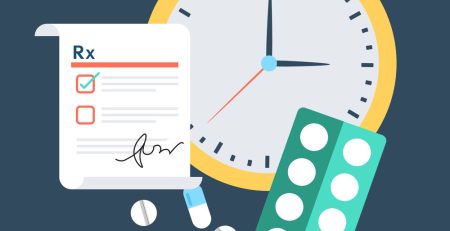First Major GBS Treatment Advance in 40 Years
A breakthrough treatment for Guillain-Barré syndrome (GBS) is showing promise, marking the first significant advancement in the management of this rare and disabling neurological condition in more than four decades.
Presented at the 2024 Peripheral Nerve Society (PNS) Annual Meeting, findings from a phase 3 trial reveal that ANX005, a targeted immunotherapy, significantly improved patient outcomes, more than doubling improvements in disability after just 8 weeks compared to placebo. Moreover, the therapy continued to demonstrate benefits over a 26-week period, offering new hope to patients suffering from this potentially life-altering disorder.
A New Path Forward in GBS Treatment
Guillain-Barré syndrome is an acute inflammatory disorder of the peripheral nervous system characterized by rapid-onset muscle paralysis, often beginning in the lower limbs and ascending upward. The disorder requires quick medical intervention, with a narrow window for effective treatment. Current management relies on supportive therapies such as intravenous immunoglobulin (IVIG) and plasma exchange, as there are no FDA-approved disease-modifying treatments available for GBS.
However, this may soon change. The investigational drug ANX005, developed by Annexon, Inc., targets the classical complement pathway, which plays a significant role in nerve damage seen in GBS. ANX005 is a fully humanized monoclonal antibody that works by inhibiting C1q, a key protein in the complement system, thereby reducing complement-mediated inflammation and nerve damage.
“We expect physicians to observe rapid improvements in patients treated with ANX005 due to its ability to inhibit complement activation and reduce neuroinflammation,” said Henk-André Kroon, MD, lead investigator and head of Translational Medicine at Annexon. He added that these improvements were reflected in multiple patient outcomes, such as faster recovery of independent walking, reduced need for mechanical ventilation, and shorter stays in the ICU.
Key Findings from the Phase 3 Study
The phase 3 trial involved 241 patients with severe GBS, randomly assigned to receive either placebo or one of two doses of ANX005 (75 mg/kg or 30 mg/kg). The study found that the lower dose (30 mg/kg) achieved a statistically significant improvement in disability, as measured by the GBS disability score (GBSDS). Patients on ANX005 showed a 2.4-fold improvement at week 8 compared to those on placebo (P = .0058).
In addition to improved disability scores, the therapy demonstrated efficacy in secondary endpoints. These included early gains in muscle strength (as measured by the Medical Research Council Scale for Muscle Strength) and a 28-day reduction in the need for mechanical ventilation. The drug also reduced levels of neurofilament light chain, a biomarker of nerve damage, by 11.2% compared to placebo between weeks 2 and 4 (P = .03), indicating that the treatment was effective in protecting nerves from further damage.
Real-World Impact and Safety
Patients receiving ANX005 also saw a median reduction of 31 days in the time it took to regain independent walking ability compared to placebo (P = .0211), a critical milestone in GBS recovery. Moreover, the drug was found to be safe and well-tolerated, with most side effects being mild to moderate, such as transient rashes from the infusion.
“For GBS patients and their families, the recovery journey can be fraught with uncertainty,” said Kroon. “Having a treatment that not only controls the disease but also provides early signs of recovery could dramatically change the patient experience.”
While the higher dose (75 mg/kg) of ANX005 also outperformed placebo in several measures, it did not reach statistical significance on the primary endpoint at week 8.
Addressing Global Variations in GBS
One notable aspect of the study was its geographic focus. The trial was conducted in Bangladesh and the Philippines, areas with a high prevalence of GBS but limited access to current treatments like IVIG. This population differs somewhat from patients in the United States and Europe, where different phenotypes of GBS are more prevalent.
To ensure broader applicability of the findings, Annexon has partnered with the International Guillain-Barré Syndrome Outcomes Study (IGOS) to compare trial results with real-world patient data in the U.S. and Europe. In a subgroup analysis of U.S. patients, those treated with ANX005 showed even greater benefits, with an odds ratio of 3.0 for reaching better health outcomes compared to placebo.
Expert Perspectives: A Potential Game-Changer
The promising results of the ANX005 trial have drawn attention from the neurology community.
“The effect sizes in terms of disability reduction and speed of recovery are substantial,” said Michael Lunn, MD, PhD, a professor of clinical neurology at the National Hospital for Neurology in London, who was not involved in the research. “Given that GBS is one of the most well-understood autoimmune neurological disorders, it’s exciting to see a treatment that might truly change outcomes for patients.”
Lunn noted that while therapies like plasma exchange and IVIG can speed recovery, they don’t necessarily prevent long-term disability. He emphasized that complement inhibition — particularly C1q inhibition, as seen with ANX005 — offers a novel approach to mitigating nerve damage in GBS. “Manipulating the complement system could be key to halting disease progression before irreversible nerve damage occurs,” he explained.
Looking Ahead: Next Steps in GBS Research
Although ANX005 represents a major advancement, additional research is needed to refine its use in GBS treatment. Kroon and his team are already planning further studies to confirm these findings and explore the drug’s efficacy in a wider range of patients.
“For the first time in 40 years, we are on the brink of offering GBS patients a targeted treatment that addresses the underlying pathology of the disease,” Kroon said. “This could lead to faster recoveries, fewer long-term disabilities, and a better quality of life for thousands of people affected by GBS each year.”











